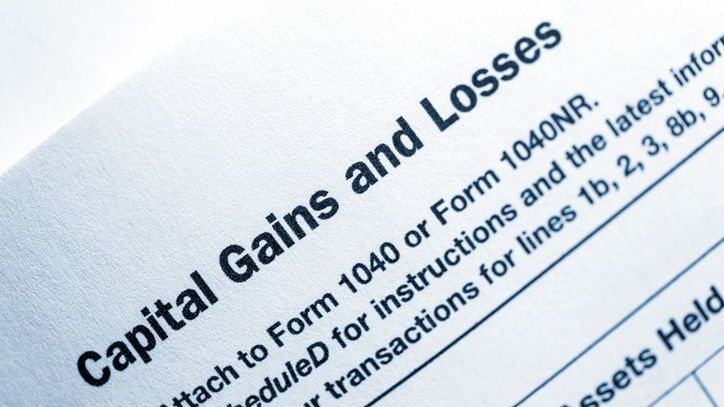Understanding this aspect of tax strategy is crucial for investors looking to optimize their financial outcomes. In essence, the IRS allows taxpayers to use capital losses to offset capital gains, which can potentially reduce the amount of tax owed. Short-term capital losses, which occur when an asset is sold at a loss within a year of purchase, can indeed be used to offset long-term capital gains, which are profits from the sale of assets held for more than a year. By strategically applying these losses, investors can potentially lower their taxable income, making it an essential consideration for anyone involved in buying and selling assets.
If you’re looking for help optimizing your tax strategy or harvesting investment losses in your portfolio, consider working with a financial advisor.
What Are Capital Gains and Capital Losses?
A capital gain occurs when you sell an asset for more than its purchase price, reflecting a positive return on your investment. Conversely, a capital loss arises when the selling price is less than the purchase price, indicating a decrease in the value of your investment. These fluctuations can affect various types of assets, including stocks, bonds, real estate and collectibles like art or antiques.
The value of these assets can change due to many factors, such as market conditions and economic indicators. For example, an increase in demand for real estate can lead to capital gains for property owners, whereas a downturn in the stock market can result in capital losses for stockholders.
As another example, if an investor buys shares in a technology firm and then sells them at a higher price after a successful product launch. This investor realizes a capital gain. Conversely, if the investor sells their shares after a decline in the company’s profitability, the investor suffers a capital loss.
Short-Term vs. Long-Term
Capital gains and losses are classified as either short-term or long-term. Short-term capital gains and losses – which come from assets held for one year or less – are taxed at higher rates, the same as ordinary income tax rates. These tax rates can be as high as 37% depending on the taxpayer’s income bracket.
In contrast, long-term capital gains and losses – which come from the sale of assets held for more than one year – benefit from lower tax rates, currently capped at 20%. This tax structure incentivizes investors to engage in longer-term investments, promoting financial stability and growth.
Capital Gains Tax Rates

The distinction between short- and long-term capital gains is key to determining how investment profits should be taxed. Short-term capital gains typically include profits from the sale of stocks, bonds or commodities held for a short duration. Long-term capital gains, on the other hand, may arise from the sale of real estate or long-held stock investments.
In 2024, short-term capital gains are taxed as ordinary income, with rates that range from 10% to 37%, depending on the taxpayer’s income bracket.
2025 Short-Term Capital Gains Tax Rates
| Rate | Single | Married Filing Jointly | Married Filing Separately | Head of Household |
|---|---|---|---|---|
| 10% | $0 – $11,925 | $0 – $23,850 | $0 – $11,925 | $0 – $17,000 |
| 12% | $11,925 – $48,475 | $23,850 – $96,950 | $11,925 – $48,475 | $17,000 – $64,850 |
| 22% | $48,475 – $103,350 | $96,950 – $206,700 | $48,475 – $103,350 | $64,850 – $103,350 |
| 24% | $103,350 – $197,300 | $206,700 – $394,600 | $103,350 – $197,300 | $103,350 – $197,300 |
| 32% | $197,300 – $250,525 | $394,600 – $501,050 | $197,300 – $250,525 | $197,300 – $250,500 |
| 35% | $250,525 – $626,350 | $501,050 – $751,600 | $250,525 – $375,800 | $250,500 – $626,350 |
| 37% | $626,350+ | $751,600+ | $375,800+ | $626,350+ |
However, long-term capital gains are taxed at 0%, 15% or 20%, based on the taxpayer’s income level:
2025 Long-Term Capital Gains Tax Rates
| Rate | Single | Married Filing Jointly | Married Filing Separately | Head of Household |
|---|---|---|---|---|
| 0% | $0 – $48,350 | $0 – $96,700 | $0 – $48,350 | $0 – $64,750 |
| 15% | $48,351 – $533,400 | $96,701 – $600,050 | $48,351 – $300,000 | $64,751 – $566,700 |
| 20% | $533,400+ | $600,050+ | $300,000+ | $566,700+ |
How Capital Losses Can Offset Gains
Investing in the stock market inherently involves both potential gains and the risk of losses. However, not all losses need to be viewed negatively if managed strategically through tax-loss harvesting. This method involves the deliberate selling of securities at a loss to offset a corresponding gain, which can help reduce the overall tax liability.
Short-term losses are first used to offset short-term gains. If short-term losses exceed the gains, the remaining loss can be applied against long-term gains. Conversely, long-term losses are first applied against long-term gains.
Notably, if an investor’s total realized losses exceed their total gains, the IRS allows up to $3,000 of this excess loss to be deducted against other types of income annually, with the possibility of carrying forward unused losses into future tax years.
Example of Tax-Loss Harvesting

Let’s take the example of an investor who has the following losses and gains within the same fiscal year:
- $5,000 short-term loss
- $2,000 short-term gain
- $7,000 long-term gain
Our hypothetical investor chose to sell a short-term investment at a $5,000 loss to reduce net gains of $9,000 ($2,000 on another short-term investment and $7,000 on an investment that they held for six years before selling).
First, the $5,000 short-term loss will offset the entirety of his $2,000 short-term gain. For tax purposes, he has $3,000 in remaining short-term losses that he can apply against his $7,000 long-term gain. As a result, he’ll pay long-term capital gains tax rates on just $4,000.
It’s important to note that while tax-loss harvesting can be a beneficial strategy, its effectiveness depends on individual circumstances and market conditions. Additionally, there are rules and limitations, such as the wash-sale rule, which prevents investors from claiming a tax deduction for a security sold at a loss and repurchased within 30 days.
Bottom Line
Understanding how short-term capital losses can offset long-term capital gains is crucial for effective tax planning. Tax-loss harvesting is a strategy that uses investment losses to offset investment gains realized in the same year. Short-term losses must first be applied to short-term gains. Then, the remaining short-term losses can be used to offset long-term gains. If total losses exceed total gains, the IRS allows investors to deduct up to $3,000 from their other forms of income, further reducing one’s tax liability in a given year.
Portfolio Tax Tips
- If tax efficiency is a financial priority, consider working with a financial advisor who can help in that area. Finding a financial advisor doesn’t have to be hard. SmartAsset’s free tool matches you with vetted financial advisors who serve your area, and you can have a free introductory call with your advisor matches to decide which one you feel is right for you. If you’re ready to find an advisor who can help you achieve your financial goals, get started now.
- Planning for a tax bill related to the sale of an investment can help make filing your taxes a little less painful. After all, it’s better to go into tax season with a sense of how much you’ll owe from when you sold that stock or ETF the previous year. Whether you have short- or long-term capital gains, SmartAsset’s capital gains tax calculator can help you estimate how much you may end up owing.
Photo credit: ©iStock.com/skhoward, ©iStock.com/Pekic, ©iStock.com/Thapana Onphalai
